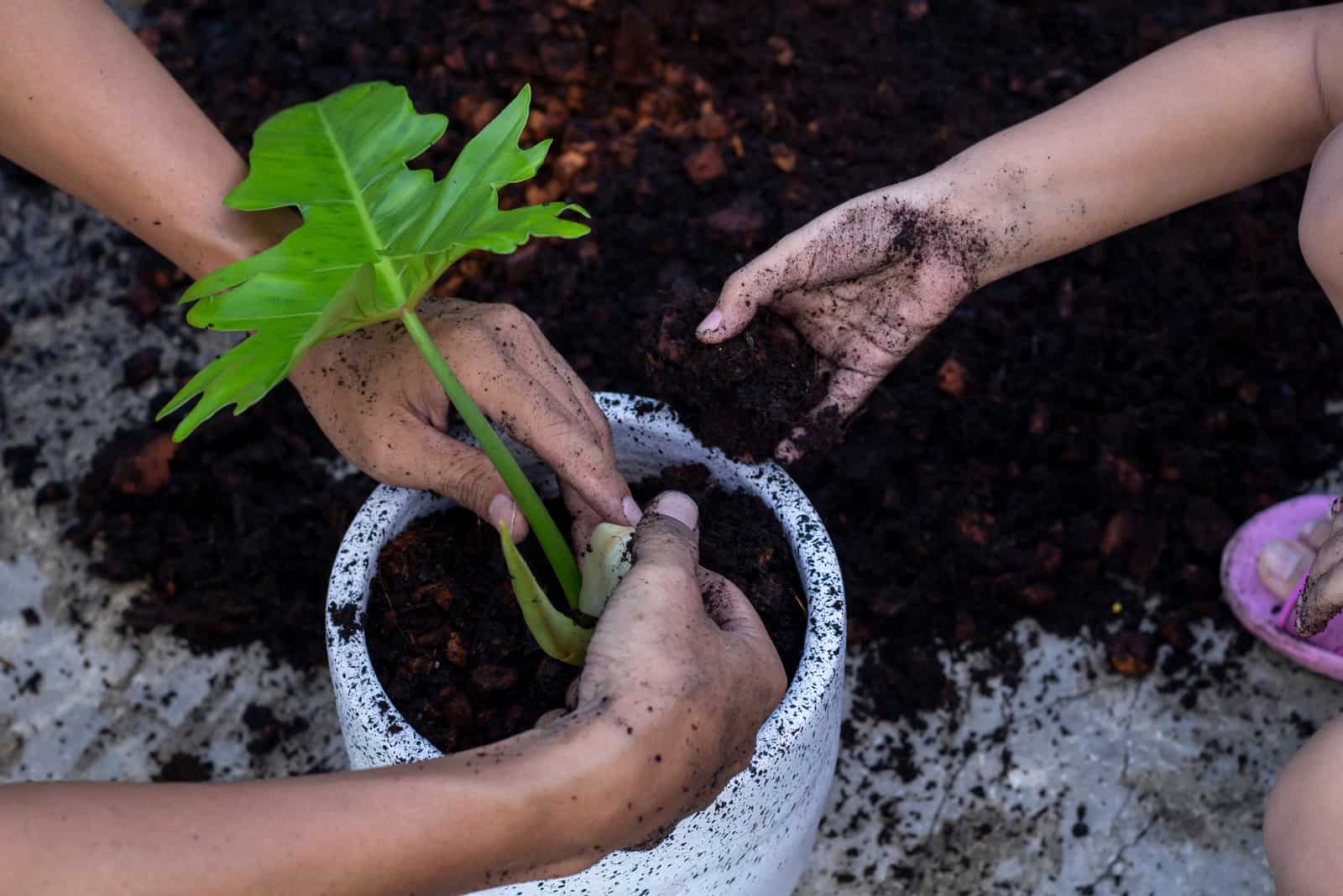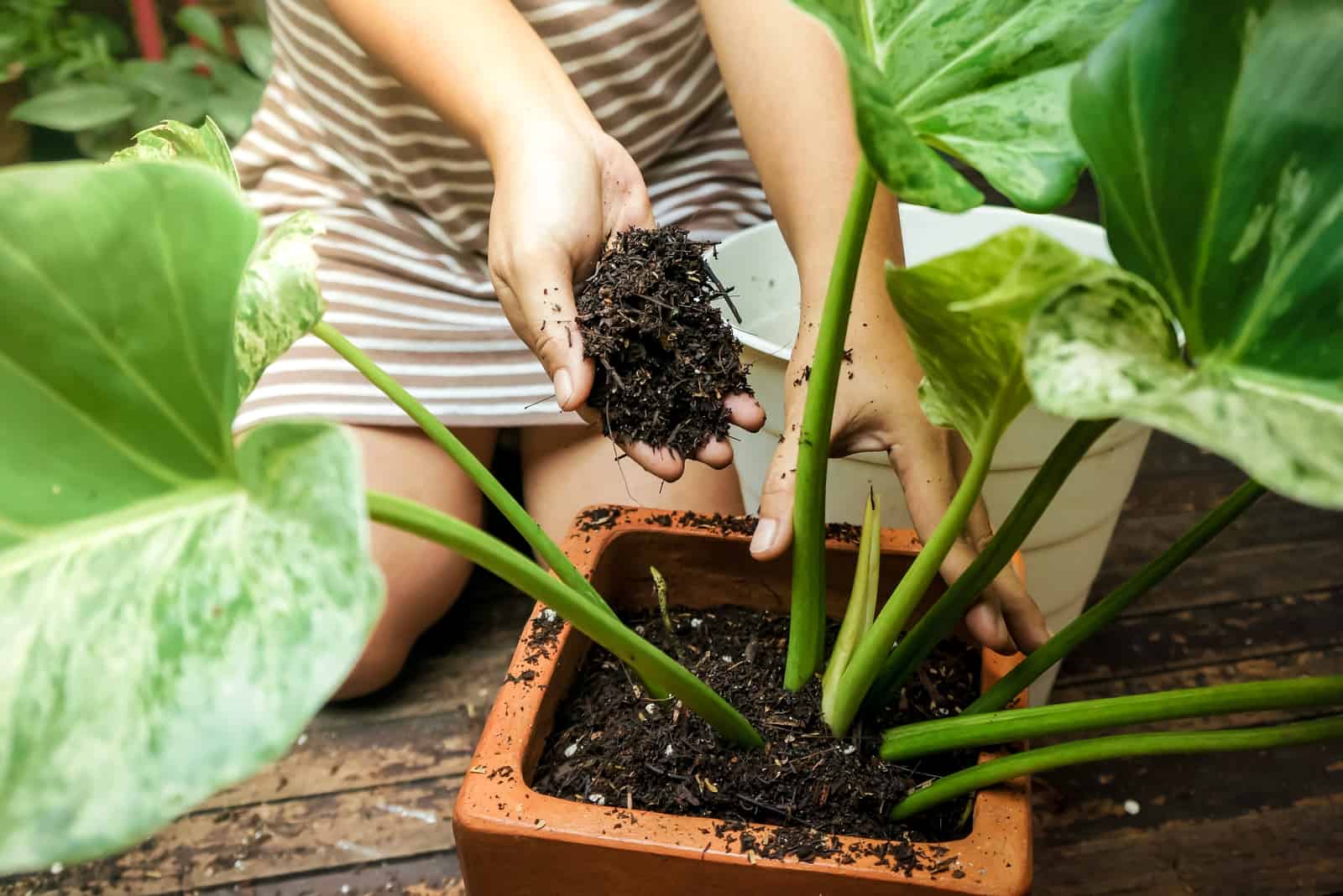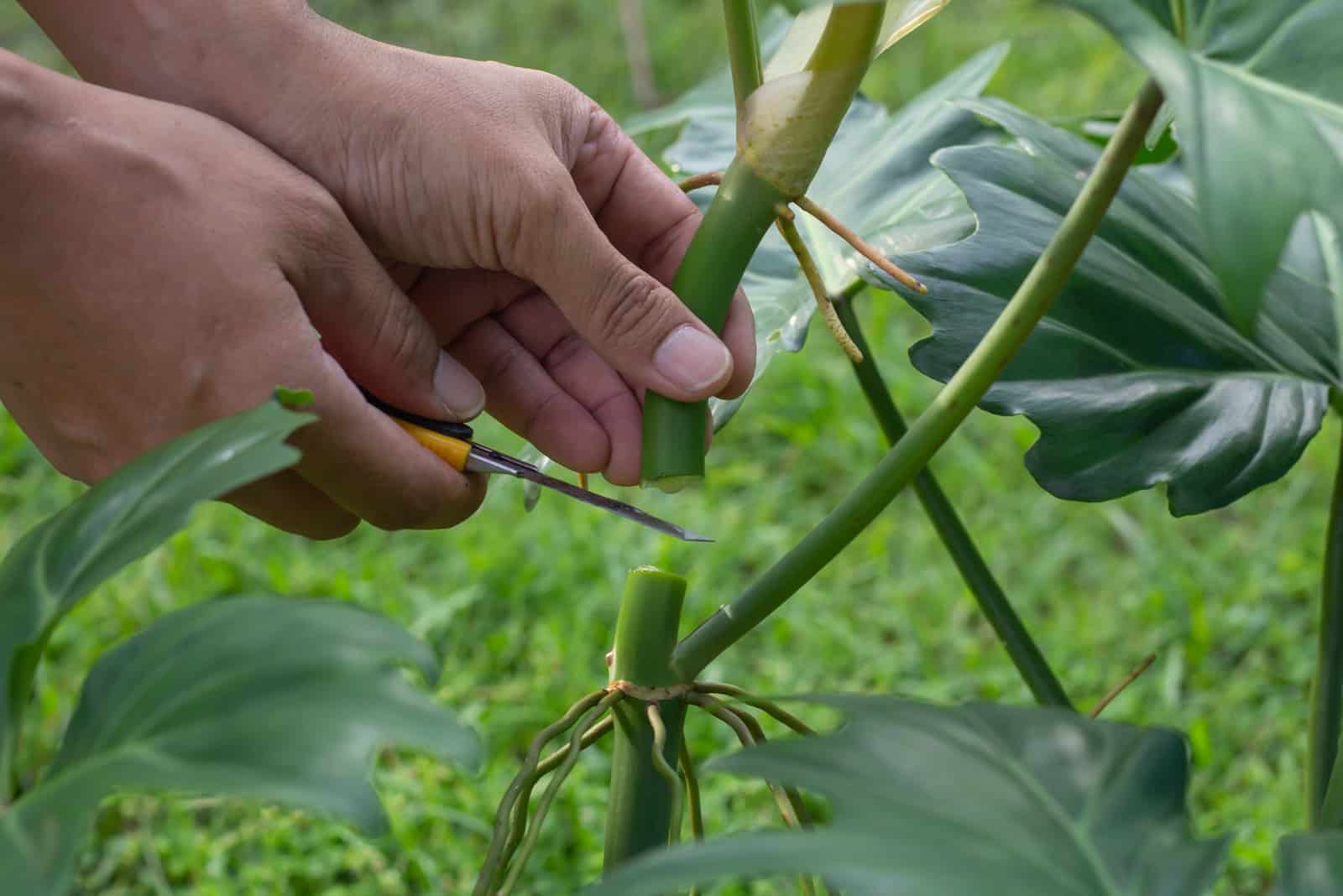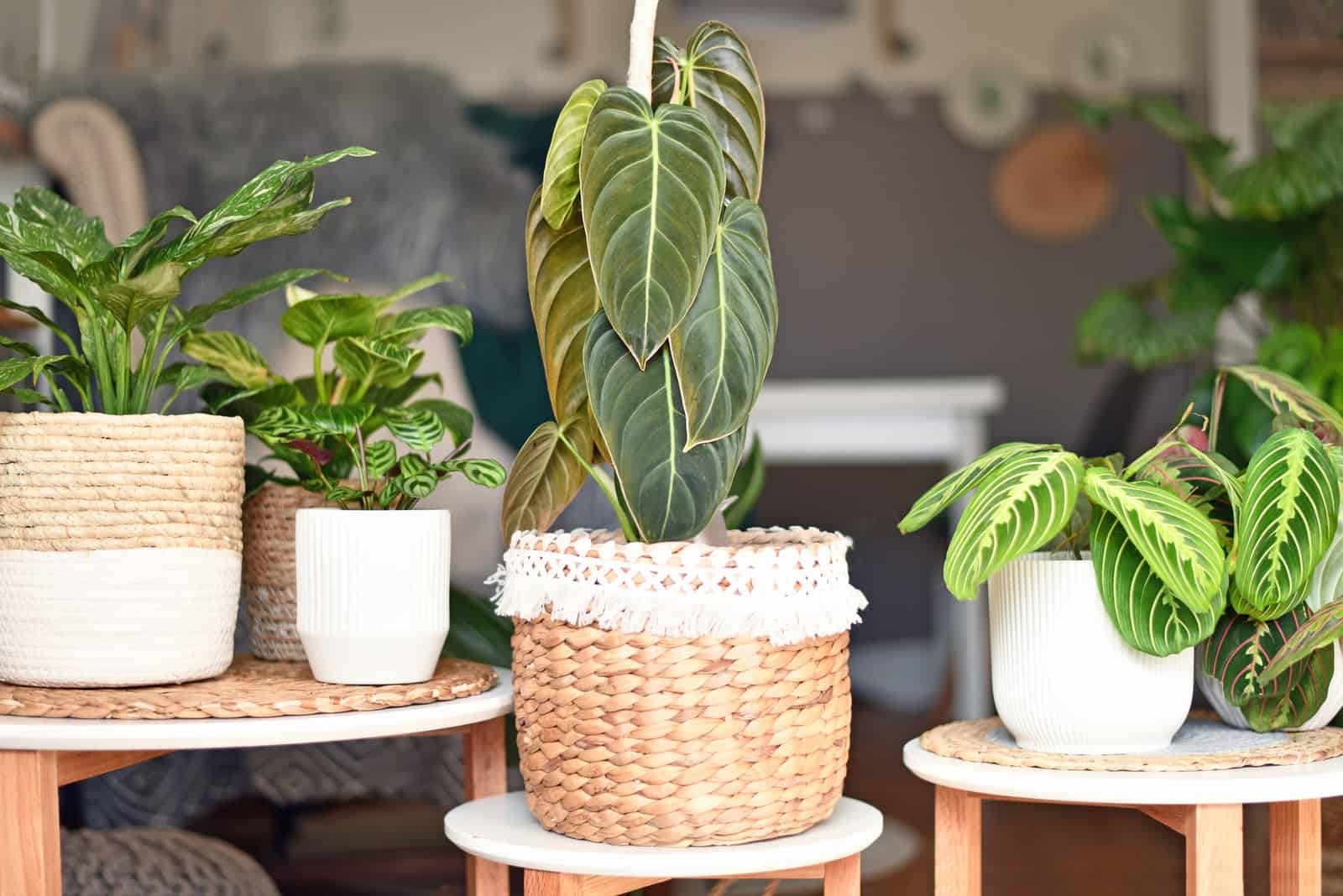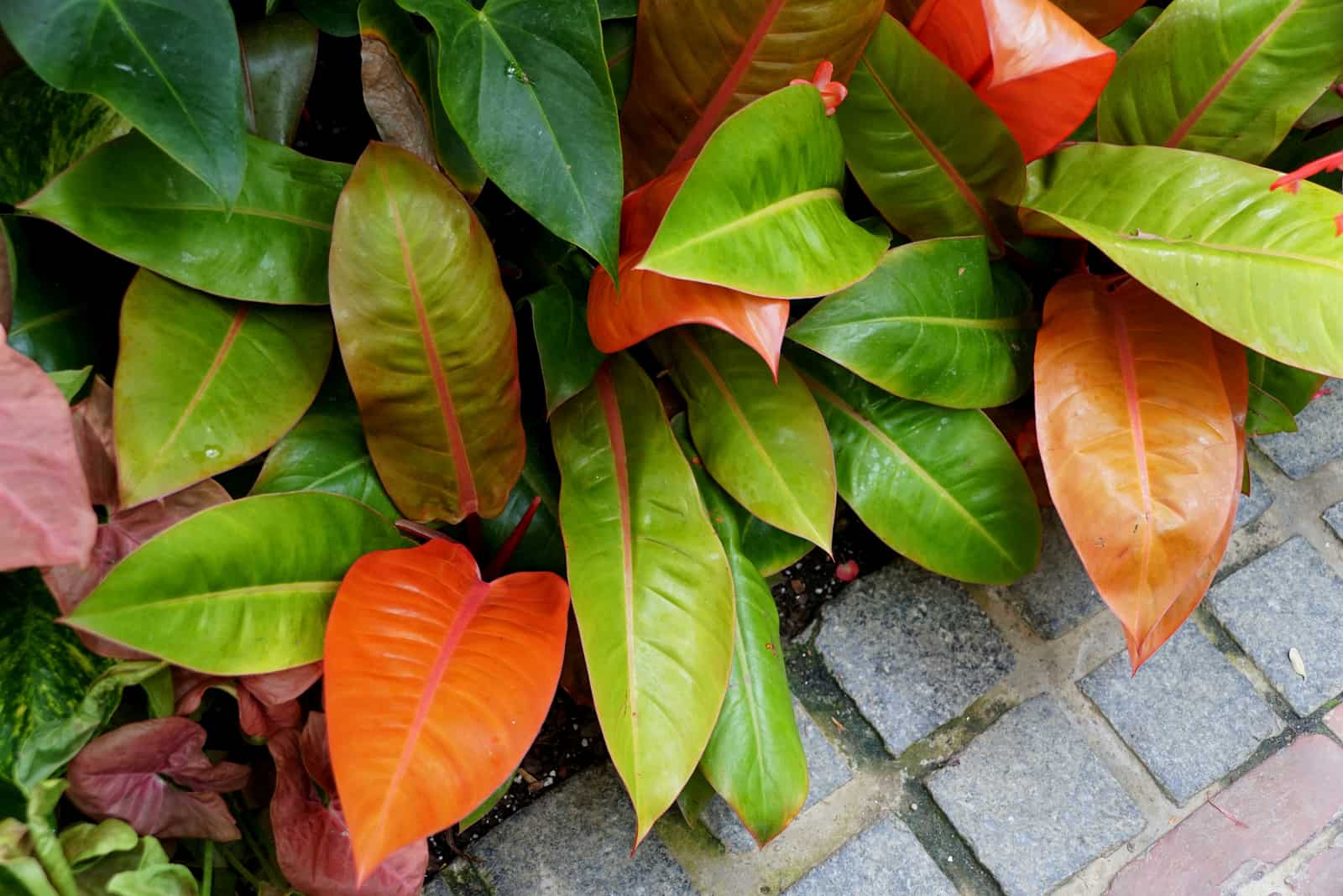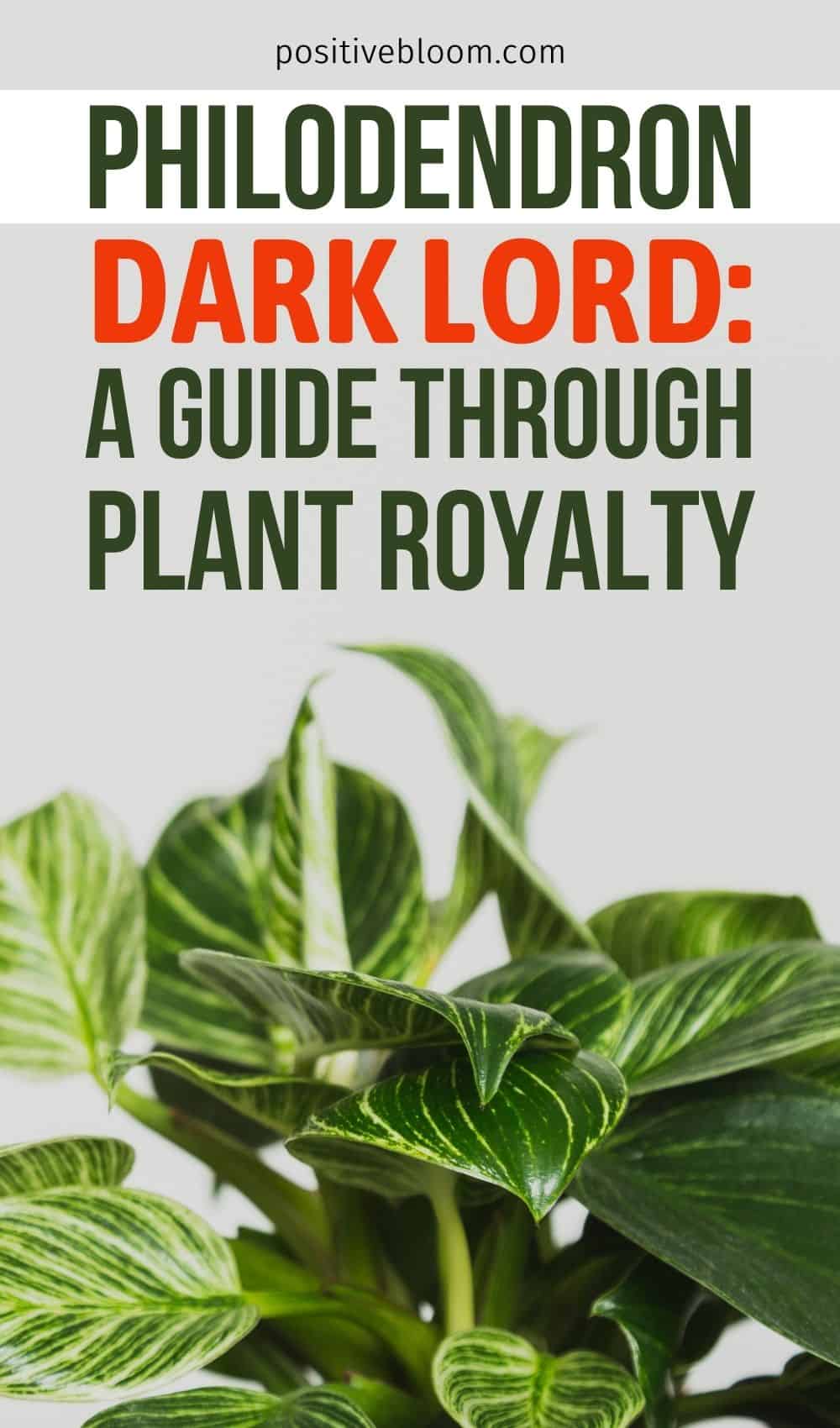This post contains affiliate links, and PositiveBloom earns from qualifying purchases through these links at no extra cost to you.
If you are looking to expand your indoor plant collection with something a bit more regal and extravagant, then the Dark Lord philodendron is the right choice for you!
This tropical plant has recently become quite popular among plant enthusiasts, mainly due to its magnificent, dark leaves and low-maintenance.
Why is it called “Dark Lord”?
This philodendron got its name because its leaves change to darker colors over time. The leaves go through a unique transformation – the first color is orange, which is reminiscent of summer and warmth.
After a while, the color changes to blood red or dark green, and eventually the leaves turn completely black. If you prefer an edgy style, then you should definitely buy a Dark Lord philodendron for your home.
What is the philodendron Dark Lord’s origin?
The Dark Lord is part of a huge royal family called Araceae, which has over 3750 members. Its origin is a tropical region of Panama, though it can also be found in Colombia. Right now, it is sold as a decorative houseplant all over the world.
Some of the famous Philodendrons are Philodendron Warscewiczii, Philodendron Camposportoanum, Philodendron Gigas, and so on…
How do you care for a philodendron Dark Lord?
Soil
The Dark Lord philodendron loves drained soil that is rich in nutrients. In order to achieve the most suitable aroid mix for your plant, and also assist drainage, it’s recommended that you put different ingredients like perlite, coco coir, and vermiculite in it. Avoid soggy and moist soil so as to prevent root rot, and stay away from sandy soils as well! Let’s see more details on Philodendron plant care.
Watering
If you have made the perfect potting mix for your Philodendron, the process of watering this rare plant should be quite straightforward.
The soil has the ability to retain moisture, so make sure to check if the soil has dried fully before watering it again. You can use chopsticks to see if the soil is moist, or you can use your finger if you don’t mind getting a bit muddy!
If the chopsticks are dry and can’t penetrate the soil easily, then you should provide this thirsty Lord with some water.
Light
You might think that this plant enjoys spending time in the dark, but the opposite is actually true! This philodendron plant adores bright, indirect light. If you want to grow your new plant outside, make sure to keep it away from direct sunlight (you can plant it in the shade under a large tree).
If you keep your philodendron indoors, it will almost certainly improve the decor of the corner of your room – just make sure that it is placed at an appropriate distance from the windows so it grows big and healthy and doesn’t get burned by the sun.
Temperature
The philodendron is a native tropical plant, so it really appreciates warm temperatures.
It would be best to maintain the temperature at a modest 25 degrees celsius – anything higher would cause the leaves to turn a maroon color.
Lower temperatures may prevent new growth and lead to the death of the Dark Lord (in that case, its son would inherit the throne!).
Fertilizers
If you want to keep your Dark Lord philodendron happy and satisfied, then you should apply fertilizer every now and then.
It is recommended to use one quarter of the normal amount, because this plant is strong and doesn’t need too much compared to other houseplants.
You should add fertilizer once a month during spring and summer as part of your plant care routine. Please avoid adding too much fertilizer because it can result in salt buildup in the soil.
What are the best fertilizers for the Dark Lord philodendron?
Oxygen, carbon, nitrogen, and hydrogen form the building blocks which make life possible – but that does not mean that other elements are not equally as important.
For instance, phosphorus and potassium are beneficial to plants, which is why you should buy fertilizer containing these elements.
Liquid fertilizers are the most suitable as they can be diluted with water. So, if you are planning on buying a philodendron, liquid fertilizers should be on your wish list!
How to propagate the Dark Lord philodendron
If you want your Dark Lord to have heirs, it would be best to propagate the plant. The process is pretty straightforward and does not require a lot of time.
• Begin the propagation process by preparing the same potting mix as you did for the parent plant.
• Use pruning scissors and cut the healthiest looking part of the stem just beneath the node that has a lot of aerial roots sprouting from it.
• Plant your stem into a pre-prepared potting mix.
• The pot size should be small as we are only planting the stem.
• Make sure to bury the roots deep into the mix.
• This is a part of our main plant, so similar plant care can be applied – keep it away from direct light, keep the temperature warm, and water it carefully.
Do you have to repot the Dark Lord philodendron?
Eventually, yes. As our plant grows, as do its roots. The root system should have enough space to perform its main function, which is to absorb water. Our Dark Lord would always be thirsty if the roots were sticking out of the pot!
The best way to deal with this is to repot the plant. Prepare your potting soil mix in a slightly larger pot with drainage holes, and then repot it carefully.
It is recommended to do this during spring because that’s when the plant is entering a new growth phase. Soon enough, you will be able to see new leaves growing!
The best pots for philodendrons
This houseplant can grow in size really quickly, so it would be best to immediately buy big pots for it. Dark Lord philodendrons don’t have any preference when it comes to pot material, but I would suggest using a ceramic or plastic pot that matches your indoor decor.
Is the Dark Lord philodendron a climbing plant?
Yes. This tropical plant and its healthy roots can climb and attach to anything nearby! You can either use a moss pole or some other moss pole alternatives.
Should I use a climbing pole for my philodendron?
If you want your plant to be the best version of itself, then you should buy a climbing pole for it. Your Dark Lord philodendron will absolutely love the additional support.
How big does the philodendron Dark Lord get?
It depends on the conditions, but they tend to grow really high. They can grow about 180 cm in height, and 90 cm in width.
4 Common Problems With the Dark Lord Philodendron:
1. The main problem with the Dark Lord philodendron is its toxicity. It contains low levels of calcium oxalate crystal. Although this isn’t harmful for adults, it can be poisonous if ingested by pets or small children.
2. Keep your eyes away from Dark Lord philodendron’s fluids and oils because they can cause conjunctivitis.
3. It can get Erwinia Blight Disease – if this happens it can kill your Dark Lord in just a few days! If you spot infected leaves, then remove them and immediately change your soil mix. If your plant makes it out alive, be careful how you water it because this disease is mainly caused by overwatering.
4. It is prone to pests such as scale, spider mites, or mealybugs. These can be easily removed by applying organic oils and rubbing alcohol to the infected area.
Leaves changing color – what does this mean?
Leaves changing color is the characteristic that makes the Dark Lord philodendron special. Its leaves change colors by nature, although sometimes it can be an indicator of something else.
For instance, if a leaf turns completely yellow, it means that you are probably overwatering your plant or that the temperature is not suitable.
A brown color means the opposite – you are probably underwatering your plant in this case.
The Dark Lord philodendron normally changes color according to different temperatures – the lower the temperature, the darker the plant will be. This phenomenon happens because when the temperature is lower, less chlorophyll is produced – and if you remember your high school biology, chlorophyll is a pigment that gives leaves their beautiful green color.
Conclusion
The Dark Lord philodendron is definitely worth buying, although it can be quite expensive due to its rarity and royalty.
Nevertheless, you won’t be sorry for spending a lot of money on one when you are looking at its magnificent, dark leaves and climbing red roots! It doesn’t require constant care, and because the plant grows rapidly, you will be able to propagate it in no time!
Until next time!
Like this post? Please share or pin it for later!


